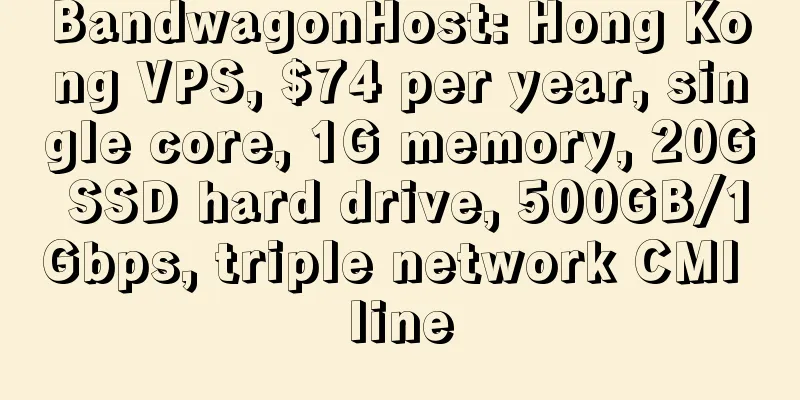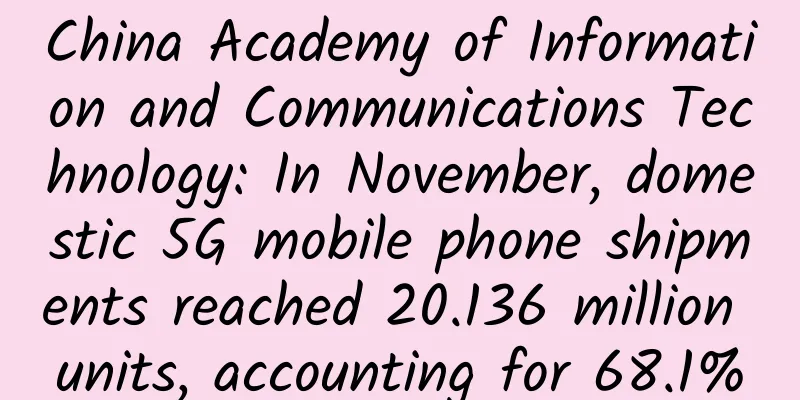FONE Consolidation: Reshaping the productivity of consolidated financial statements under the trend of business and financial integration

|
For large group companies, the preparation of consolidated financial statements has always been a big challenge. Although from the perspective of the workflow, consolidated financial statements are "collecting data, consolidating and offsetting, and then presenting the results", for financial personnel, each link is full of thorns. The data collection phase involves the heaviest work in the entire merger process. The group's financial staff generally need to export the report data of each subsidiary from the ERP system. Due to the large number of subsidiaries and the multiple compilations involved in the consolidated report, manual collection takes a lot of time and manpower, and the data is also lacking in integrity and accuracy. At the same time, different regulatory authorities require different report formats. How to unify the report data formats of each subsidiary and generate multi-caliber reports based on the same data source is also a challenge. In the consolidation and elimination process, automated elimination is the most difficult task, and is jokingly called one of the four major accounting problems in the industry. Complex equity relationships, frequent equity changes, internal transactions, etc. all affect the efficiency of consolidation and elimination. In addition, the reconciliation between subsidiaries is based on a large number of Excel reports, which often makes it difficult to locate the causes of differences and cannot flexibly handle differences. It can only rely on a lot of offline communication, which seriously slows down the report preparation cycle. In the report presentation stage, the preparation of consolidated reports for the group's many subsidiaries is completed manually. Whether it is the display of real-time reconciliation reports, consolidated working papers, common analyses and other report contents, or the output of financial master tables and notes, as well as the review and tracking of the consolidation process, it is difficult to meet the group's financial management needs. As the scale of the group expands rapidly, the difficulty of preparing consolidated financial statements continues to increase. How should enterprises improve their ability to prepare consolidated statements to meet the group's requirements for financial information management and disclosure? Replacing manual Excel, automated consolidated report construction is becoming a trend In fact, using professional consolidated reporting software to replace manual Excel preparation and building an automated consolidated reporting system is becoming a common choice for group companies. Consolidated reporting software generally has automatic data collection functions, which can significantly reduce the manual reporting work of financial personnel, improve data quality, and free financial personnel from the complicated daily work of manual verification and reconciliation. They can then devote more energy to the daily management of subsidiary finances by the group finance, thereby enhancing the management value of the group finance. But it is worth noting that not all consolidated reporting software can meet the needs of domestic group companies. In the past, foreign manufacturers represented by Oracle/SAP almost monopolized the entire ERP/EPM field. If domestic enterprises wanted to use their consolidated reporting products, they first needed to develop a large number of customized functions, which brought heavy IT operation and maintenance work. At the same time, these foreign consolidated reporting products were designed based on the usage habits of foreign users, and domestic enterprises were not used to them and the user experience was not good. However, the consolidated financial statements developed by most traditional domestic software manufacturers are mainly two-dimensional tables. With the continuous emergence of new financial management demands such as "legal and management integration", it is difficult to expand the dimensions of report preparation and analysis, and thus they are gradually lagging behind the needs of enterprises. For this reason, FONE, as the only EPM manufacturer in China that has independent control over all core technologies from the underlying platform to the upper-level applications, has taken the lead in breaking the monopoly of foreign giants in the domestic EPM field for more than ten years and launched a highly automated consolidated reporting product FONE Consolidation (hereinafter referred to as "FC") to solve the pain points of group companies in the field of consolidated reporting. It is reported that the FONE FC consolidated reporting system can connect the accounting systems of various branches and subsidiaries, allowing the group's finances to automatically obtain the data required for the merger, calculate the consolidated offset amount with one click, and generate consolidated reports, greatly shortening the report issuance cycle and improving the efficiency and accuracy of report preparation. While helping the group to complete the management of its overall financial status and operating results, it can also meet the requirements of information disclosure. FONE FC consolidated statements, easy to use in four steps As a product with a high degree of standardization and automation, the FONE FC consolidated report has a low threshold for financial personnel to use, and can be easily used without training. So, what are the specific functions of the FONE FC consolidated report product? Let's take a look at how to use the FONE FC consolidated report from the four steps of data collection, reconciliation, consolidation and offset, and report presentation: Step 1: Data Collection When collecting financial data from various branches and subsidiaries, FONE provides standardized interfaces to connect to ERP systems such as SAP, Oracle, UFIDA, Kingdee, and Inspur, as well as mainstream databases. Without the need for a large amount of interface development, it is possible to collect data from branches and subsidiaries and realize cross-system consolidated reporting. After extracting data, FONE will automatically check financial rules such as balance sheet balance, main and supplementary statements balance, etc., allowing enterprises to say goodbye to the tedious work of repeated verification and checking of numbers. Not only that, FONE consolidated financial statements also support integration with business data, uploading long-term investment details, sales details, inventory details and other data with one click to meet the diverse financial data demands. Step 2: Reconciliation Platform After collecting the accounting data of branches and subsidiaries, the company can use the FONE reconciliation platform to reconcile transactions between branches and subsidiaries, automatically calculate related differences, and quickly eliminate differences by adjusting the statements without adjusting the accounts. First of all, the finance department can automatically configure reconciliation types such as internal purchases and sales, fund borrowing, and management fees. FONE not only supports reconciliation between independent subsidiaries, but also can realize reconciliation between merged sub-nodes and independent subsidiaries. When dealing with differences, you can preset voucher templates such as transaction adjustment. The merger personnel only need to select the corresponding template according to the adjustment reason to quickly generate the adjustment voucher. The differences can be eliminated by adjusting the table without adjusting the account. The reconciliation granularity of FONE's consolidated reporting system can be broken down from account balances to transactions vouchers, and the causes of differences can be accurately located. Step 3: Combine offsets FONE's visual equity relationship management function allows the group's shareholding relationship to be clearly visible. It can manage equity changes such as mergers and acquisitions, disposals, etc. according to time nodes, and can meet the consolidation processing of complex shareholding relationships such as joint shareholdings. When processing multi-currency conversions, FONE will match different exchange rates such as annual average and period average to the corresponding accounting subjects and automatically convert the exchange rates. When processing cross-border and cross-regional mergers, FONE can realize automatic conversion between multiple accounting standards and issue financial statements that meet the regulatory requirements of different countries and regions. In addition to statutory consolidation, financial statements can also be consolidated according to management structures such as business units, products, and regions, which not only meets the information disclosure requirements of regulatory authorities, but also meets the business analysis needs of enterprises. It says goodbye to nested Excel tables, automatically calculates consolidation and offsets, and generates three major reports: balance sheet, income statement, and cash flow statement, as well as notes such as account age, fixed asset details, and inventory details. For standard entries such as internal transaction cash flow, equity adjustment offset, unrealized inventory, etc., FONE can realize automatic offset of standard consolidation entries and automatically generate consolidation drafts through one-click consolidation of system configuration. In addition, you can drill down in the consolidation draft to view adjustment and offset vouchers, so that the business data and offset rules involved in each offset are clearly visible, and the full process traceability of the consolidated data can be realized. With the help of FONE task flow, there is no need for programming development. You can set up the workflow of consolidated reports by clicking and dragging. The financial personnel of the subsidiary only need to follow the system instructions to complete the consolidation work step by step, which greatly reduces the training and communication costs. The headquarters can also view the completion progress in real time and urge the relevant persons in charge to complete the consolidation work. When the merger is completed that month, in order to ensure the security of historical data, FONE can also provide a data locking function to prevent operators from performing secondary operations on confirmed data, thereby reducing data security risks. Step 4: Report display FONE can provide highly scalable data docking functions, realize linkage and push with other platforms such as the group BI management cockpit and mobile data operation platform, and realize visual analysis of management reports and some statutory report data. For example, in the report analysis of the company's operating conditions, FONE's analysis granularity can be refined to each profit center, realizing operating profit analysis of each business segment and product line; it can also directly drill from the account balance to the detailed voucher in the report, extending the analysis perspective to the very end of the company's operations and understanding the overall picture of the company's operations. Focusing on both efficiency and experience, FONE reshapes the productivity of consolidated reporting Today, FONE FC consolidated financial statements have been successfully applied in group companies in many industries such as manufacturing, medicine, retail, energy, and agriculture, providing a new productivity tool for companies to prepare consolidated financial statements and meet financial management needs. Shen Tianyun, director of FONE's Consolidation Division, said that with the advent of the era of business and financial integration, consolidated financial statements are not only a necessary task for large enterprises, but also for small and medium-sized companies. Reliable financial consolidation and reporting tools are also needed, and FONE FC's consolidated financial statements can bring four major values to enterprises: Value 1: Efficiency Improvement The implementation of the FONE consolidated reporting system can greatly improve the efficiency of report preparation, shorten the preparation cycle, and meet the needs of enterprises in statutory reports and management and operating reports. Take a large manufacturing listed company as an example. The group has nearly 100 subsidiaries. The monthly consolidated financial statements need to manually collect the report data of all subsidiaries from two sets of ERP systems. However, the report data calibers of each subsidiary are inconsistent and the number of reports is huge, resulting in low efficiency in the preparation of the group's consolidated financial statements. The preparation work can only be completed at the end of each month. In order to improve rapidly, the group adopted the FONE consolidated reporting system, converted the average data of the two ERP systems into a standardized caliber, and integrated it into the FONE consolidated reporting system. After the project was launched, the group was able to complete the preparation of a full set of more than 130 statutory reports 10 working days in advance, and no longer needed the cooperation of subordinate reporting positions, and only two financial personnel at the group level were needed to complete it. In addition, after the statutory reports were prepared, the group's finance department can continue to prepare internal business management analysis reports to meet the needs of decision-makers for business management analysis. Value 2: Scalability With the continuous expansion of the demand for corporate consolidated financial statements, from the initial preparation of the "three major statements" (balance sheet, income statement, and cash flow statement) to the current "legal and management integration" construction, the consolidated financial statement system also needs to expand accordingly. This requires the scalability of the underlying system and sufficient analysis dimensions to meet the ever-changing needs of the enterprise. As one of the few EPM manufacturers in China with independent and controllable technology, FONE has built a solid digital foundation for consolidated reporting products with M-OLAP (real-time online computing and analysis) engine technology, multi-dimensional modeling capabilities and distributed architecture, which can meet users' requirements for high performance, high concurrency, real-time analysis and prediction capabilities of consolidated reporting systems. For example, the FONE FC consolidated reporting system provides an unlimited number of custom dimensions to meet the personalized needs of enterprises. It is used to store analytical information required for a series of appendices or management reports such as product lines, projects, business units, and regions. Through multiple custom dimensions, the company's management and reporting data is guaranteed to be detailed, avoiding redundancy in account dimensions caused by some reports, and providing support for subsequent financial analysis. Value 3: User Self-Service For financial personnel, whether they can define the report dimensions and presentation methods independently is a core concern. FONE FC consolidated reports are based on a unified data base and built-in data models, allowing enterprise users to achieve flexible form definition, format display, report analysis, etc. through a visual interface similar to Excel, just by "drag and drop", to meet different financial report preparation and analysis needs. Value 4: Process Transparency FONE FC consolidated reporting system consolidates financial vouchers and business documents, making the entire consolidation process transparent. Through an integrated process interface and automated reconciliation reports, the accuracy of the consolidated data within the group is ensured, and reconciliation vouchers and detailed data that are easy to trace are provided, so that financial personnel can conveniently manage, control, and integrate the completion process within the group, and quickly and intuitively trace the source of the consolidation offset results. In general, FONE FC consolidated statements have brought more refined consolidated analysis to group companies, greatly improving the efficiency of preparing consolidated statements while improving the granularity and accuracy of the statements. In addition, through the construction of a legal and management integrated model, FONE has also helped group companies quickly expand from statutory consolidation to management-based analysis, making the entire data process visible and traceable, and realizing "what you see is what you get". As a representative product of business and financial integration, FONE FC consolidated financial statements provide an ideal choice for the preparation of corporate consolidated financial statements, helping enterprises achieve digital upgrades in financial management. |
<<: Have you used 5G? Wang Jianzhou: 6G network will be commercially available in 2030
>>: Ruijie Wireless AP: Helping Fresh Fruits in Baiguoyuan to Extend Their Expiration Date
Recommend
Maxthon Hosting: 56 yuan/month KVM-2GB/40GB/400GB/Korea CN2, Hong Kong CN2, Japan, US CN2, etc.
Aoyozhuji, a long-established foreign VPS service...
Potential application scenarios of 6G in the future
Although 6G is not yet a viable technology, it wi...
Opportunities and challenges of the 5G golden frequency band: Is the 700MHz industry chain ready?
Spectrum resources are the core resources for the...
HostKvm 10th Anniversary Recharge $50 Get $10, 20% off all items, Hong Kong VPS/Singapore VPS/Japan VPS monthly payment starts from $5.6
Time flies, HostKvm has been established for 10 y...
Connecting the Next Billion: 5G and Satellite
5G will revolutionize the Internet of Things due ...
Comprehensive network monitoring tools to watch in 2020
Network monitoring is one of the most important n...
How big an impact will 5G have on future military?
The first application scenario of 5G is military ...
New product pre-sale | Aruba Instant On MU-MIMO dual-band Gigabit Mesh wireless AP series products starting at 606 yuan
Today I would like to introduce to you Aruba laun...
With the accelerated development of 5G technology, what challenges does the data center face?
Memory security is not a new concept, but the sur...
ServerCheap: $3/month KVM-1GB/20G NVMe/1TB/Dallas Data Center
ServerCheap was founded in 2012 and is a subsidia...
How does private 5G impact Industry 4.0 transformation?
Private 5G networks have become very popular as r...
What is Wavelength Division Multiplexing (WDM)? A Beginner's Guide to WDM
Wavelength Division Multiplexing (WDM) has gained...
Top ten trend predictions: Where will domestic telecom operators go in 2021?
After a complicated 2020, the wheel of time has e...
Firmly oppose! The Ministry of Foreign Affairs responded to the US revoking the operator's operating authorization in the US
[[388612]] On March 19, at the regular press conf...
UUUVPS: 60 yuan/month-1GB/30GB/4M/Hong Kong CN2 line
UUUVPS is now holding a three-year anniversary ev...









![[6.18] V5.NET 20% off monthly payment for all independent servers, 30% off for specific models in Tsuen Wan, Hong Kong](/upload/images/67cabe8732fca.webp)